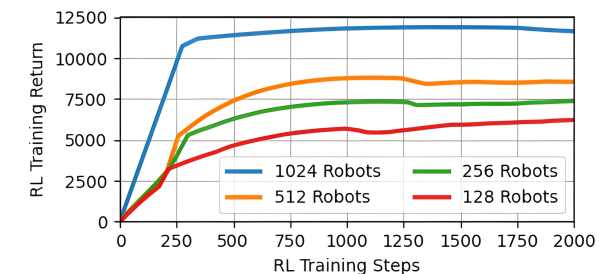Linux离线部署ELK
文章目录
- 前期准备
- 开始安装
- 安装elastic search
- 安装logstash
- 安装kibana
- 配置ELK
- 配置ElasticSearch
- 配置logstash
- 配置kibana
- 启动ELK
- 启动命令
- 启动测试
- 设置ELK策略
- 创建ILM策略
- 将ILM策略与日志index关联
- 查看索引是否被ILM策略管理
前期准备
ELK包含三部分软件
ElasticSearch用作搜索引擎
Logstash用作日志收集,也可以是其他的日志搜集器比如filebeat
Kibana用作日志管理界面
资源包准备:
可以去官方下载elk的rpm安装包
https://www.elastic.co/guide/en/elasticsearch/reference/current/rpm.html
或者从阿里的rpm库找一下
https://developer.aliyun.com/packageSearch?word=haproxy
开始安装
安装elastic search
sudo rpm -ivh elasticsearch-8.15.2-x86_64.rpm

安装logstash
sudo rpm -ivh logstash-8.15.2-x86_64.rpm

安装kibana
sudo rpm -ivh kibana-8.15.2-x86_64.rpm

配置ELK
配置ElasticSearch
留意端口和host,还有是否为集群部署
使用编辑器打开elasticsearch的配置文件一般是
vi /etc/elasticsearch/elasticsearch.yml
# ======================== Elasticsearch Configuration =========================
#
# NOTE: Elasticsearch comes with reasonable defaults for most settings.
# Before you set out to tweak and tune the configuration, make sure you
# understand what are you trying to accomplish and the consequences.
#
# The primary way of configuring a node is via this file. This template lists
# the most important settings you may want to configure for a production cluster.
#
# Please consult the documentation for further information on configuration options:
# https://www.elastic.co/guide/en/elasticsearch/reference/index.html
#
# ---------------------------------- Cluster -----------------------------------
#
# Use a descriptive name for your cluster:
#
cluster.name: my-application
#
# ------------------------------------ Node ------------------------------------
#
# Use a descriptive name for the node:
#
node.name: node-1
node.roles: ["master", "data"]
#
# Add custom attributes to the node:
#
#node.attr.rack: r1
#
# ----------------------------------- Paths ------------------------------------
#
# Path to directory where to store the data (separate multiple locations by comma):
#
# path.data: /path/to/data
#
# Path to log files:
#
# path.logs: /path/to/logs
#
# ----------------------------------- Memory -----------------------------------
#
# Lock the memory on startup:
#
#bootstrap.system_call_filter: true
#bootstrap.memory_lock: true
#
# Make sure that the heap size is set to about half the memory available
# on the system and that the owner of the process is allowed to use this
# limit.
#
# Elasticsearch performs poorly when the system is swapping the memory.
#
# ---------------------------------- Network -----------------------------------
#
# By default Elasticsearch is only accessible on localhost. Set a different
# address here to expose this node on the network:
#
network.host: 0.0.0.0
#
# By default Elasticsearch listens for HTTP traffic on the first free port it
# finds starting at 9200. Set a specific HTTP port here:
#
http.port: 9200
#
# For more information, consult the network module documentation.
#
# --------------------------------- Discovery ----------------------------------
#
# Pass an initial list of hosts to perform discovery when this node is started:
# The default list of hosts is ["127.0.0.1", "[::1]"]
#
#discovery.seed_hosts: ["host1", "host2"]
#
discovery.type: single-node# Bootstrap the cluster using an initial set of master-eligible nodes:
#
#cluster.initial_master_nodes: ["node-1", "node-2"]
#
# For more information, consult the discovery and cluster formation module documentation.
#
# ---------------------------------- Various -----------------------------------
#
# Allow wildcard deletion of indices:
#
#action.destructive_requires_name: false#----------------------- BEGIN SECURITY AUTO CONFIGURATION -----------------------
#
# The following settings, TLS certificates, and keys have been automatically
# generated to configure Elasticsearch security features on 11-06-2024 09:36:34
#
# --------------------------------------------------------------------------------# Enable security features
xpack.security.enabled: falsexpack.security.enrollment.enabled: false# Enable encryption for HTTP API client connections, such as Kibana, Logstash, and Agents
xpack.security.http.ssl:enabled: falsekeystore.path: certs/http.p12# Enable encryption and mutual authentication between cluster nodes
xpack.security.transport.ssl:enabled: trueverification_mode: certificatekeystore.path: certs/transport.p12truststore.path: certs/transport.p12
# Create a new cluster with the current node only
# Additional nodes can still join the cluster later
#cluster.initial_master_nodes: ["node-1"]#----------------------- END SECURITY AUTO CONFIGURATION -------------------------
配置logstash
创建logstash日志存储目录
如果不希望logstash再单独保存日志文件,不需要以下步骤,并且config里面的output.file也可以删掉,防止日志太大
sudo mkdir -p /elk/logs/logstash/
sudo chown -R logstash:logstash /elk/logs/logstash/
sudo chmod -R 755 /elk/logs/logstash/
打开logstash配置文件
vi /etc/logstash/conf.d/logstash.conf
input {http {host => "0.0.0.0" # 监听所有可用接口port => 5441 # 监听端口additional_codecs => {"application/json" => "json"}type => "http_json"}http {host => "0.0.0.0" # 监听所有可用接口port => 5442 # 监听端口additional_codecs => {"application/json" => "json"}type => "http5442_json"}udp {port => 5440codec => plaintype => "udp_source"}
}
filter {date {match => ["event.original", "YYYY-MM-dd HH:mm:ss.SSSS"]timezone => "Asia/Shanghai"target => "@timestamp"}
}output {if [type] == "http_json" {elasticsearch {hosts => ["http://localhost:9200"]index => "http-log-%{+YYYY.MM.dd}" #elastic的索引}}else if [type] == "udp_source" {elasticsearch {hosts => ["http://localhost:9200"]index => "udp-log-%{+YYYY.MM.dd}"}}else if [type] == "http5442_json" {elasticsearch {hosts => ["http://localhost:9200"]index => "http5442-log-%{+YYYY.MM.dd}"}}stdout {codec => rubydebug} # 将日志输出到控制台,用于调试
}配置kibana
vi /etc/kibana/kibana.yml
# For more configuration options see the configuration guide for Kibana in
# https://www.elastic.co/guide/index.html# =================== System: Kibana Server ===================
# Kibana is served by a back end server. This setting specifies the port to use.
server.port: 5601# Specifies the address to which the Kibana server will bind. IP addresses and host names are both valid values.
# The default is 'localhost', which usually means remote machines will not be able to connect.
# To allow connections from remote users, set this parameter to a non-loopback address.
server.host: "0.0.0.0"# Enables you to specify a path to mount Kibana at if you are running behind a proxy.
# Use the `server.rewriteBasePath` setting to tell Kibana if it should remove the basePath
# from requests it receives, and to prevent a deprecation warning at startup.
# This setting cannot end in a slash.
#server.basePath: ""# Specifies whether Kibana should rewrite requests that are prefixed with
# `server.basePath` or require that they are rewritten by your reverse proxy.
# Defaults to `false`.
#server.rewriteBasePath: false# Specifies the public URL at which Kibana is available for end users. If
# `server.basePath` is configured this URL should end with the same basePath.
#server.publicBaseUrl: ""# The maximum payload size in bytes for incoming server requests.
#server.maxPayload: 1048576# The Kibana server's name. This is used for display purposes.
#server.name: "your-hostname"# =================== System: Kibana Server (Optional) ===================
# Enables SSL and paths to the PEM-format SSL certificate and SSL key files, respectively.
# These settings enable SSL for outgoing requests from the Kibana server to the browser.
#server.ssl.enabled: false
#server.ssl.certificate: /path/to/your/server.crt
#server.ssl.key: /path/to/your/server.key# =================== System: Elasticsearch ===================
# The URLs of the Elasticsearch instances to use for all your queries.
elasticsearch.hosts: ["http://localhost:9200"]# If your Elasticsearch is protected with basic authentication, these settings provide
# the username and password that the Kibana server uses to perform maintenance on the Kibana
# index at startup. Your Kibana users still need to authenticate with Elasticsearch, which
# is proxied through the Kibana server.
elasticsearch.username: "kibana_system"
elasticsearch.password: "pass"# Kibana can also authenticate to Elasticsearch via "service account tokens".
# Service account tokens are Bearer style tokens that replace the traditional username/password based configuration.
# Use this token instead of a username/password.
# elasticsearch.serviceAccountToken: "my_token"# Time in milliseconds to wait for Elasticsearch to respond to pings. Defaults to the value of
# the elasticsearch.requestTimeout setting.
#elasticsearch.pingTimeout: 1500# Time in milliseconds to wait for responses from the back end or Elasticsearch. This value
# must be a positive integer.
#elasticsearch.requestTimeout: 30000# The maximum number of sockets that can be used for communications with elasticsearch.
# Defaults to `Infinity`.
#elasticsearch.maxSockets: 1024# Specifies whether Kibana should use compression for communications with elasticsearch
# Defaults to `false`.
#elasticsearch.compression: false# List of Kibana client-side headers to send to Elasticsearch. To send *no* client-side
# headers, set this value to [] (an empty list).
#elasticsearch.requestHeadersWhitelist: [ authorization ]# Header names and values that are sent to Elasticsearch. Any custom headers cannot be overwritten
# by client-side headers, regardless of the elasticsearch.requestHeadersWhitelist configuration.
#elasticsearch.customHeaders: {}# Time in milliseconds for Elasticsearch to wait for responses from shards. Set to 0 to disable.
#elasticsearch.shardTimeout: 30000# =================== System: Elasticsearch (Optional) ===================
# These files are used to verify the identity of Kibana to Elasticsearch and are required when
# xpack.security.http.ssl.client_authentication in Elasticsearch is set to required.
#elasticsearch.ssl.certificate: /path/to/your/client.crt
#elasticsearch.ssl.key: /path/to/your/client.key# Enables you to specify a path to the PEM file for the certificate
# authority for your Elasticsearch instance.
#elasticsearch.ssl.certificateAuthorities: [ "/path/to/your/CA.pem" ]# To disregard the validity of SSL certificates, change this setting's value to 'none'.
#elasticsearch.ssl.verificationMode: full# =================== System: Logging ===================
# Set the value of this setting to off to suppress all logging output, or to debug to log everything. Defaults to 'info'
#logging.root.level: debug# Enables you to specify a file where Kibana stores log output.
logging:appenders:file:type: filefileName: /var/log/kibana/kibana.loglayout:type: jsonroot:appenders:- default- file
# policy:
# type: size-limit
# size: 256mb
# strategy:
# type: numeric
# max: 10
# layout:
# type: json# Logs queries sent to Elasticsearch.
#logging.loggers:
# - name: elasticsearch.query
# level: debug# Logs http responses.
#logging.loggers:
# - name: http.server.response
# level: debug# Logs system usage information.
#logging.loggers:
# - name: metrics.ops
# level: debug# Enables debug logging on the browser (dev console)
#logging.browser.root:
# level: debug# =================== System: Other ===================
# The path where Kibana stores persistent data not saved in Elasticsearch. Defaults to data
#path.data: data# Specifies the path where Kibana creates the process ID file.
pid.file: /run/kibana/kibana.pid# Set the interval in milliseconds to sample system and process performance
# metrics. Minimum is 100ms. Defaults to 5000ms.
#ops.interval: 5000# Specifies locale to be used for all localizable strings, dates and number formats.
# Supported languages are the following: English (default) "en", Chinese "zh-CN", Japanese "ja-JP", French "fr-FR".
#i18n.locale: "en"# =================== Frequently used (Optional)===================# =================== Saved Objects: Migrations ===================
# Saved object migrations run at startup. If you run into migration-related issues, you might need to adjust these settings.# The number of documents migrated at a time.
# If Kibana can't start up or upgrade due to an Elasticsearch `circuit_breaking_exception`,
# use a smaller batchSize value to reduce the memory pressure. Defaults to 1000 objects per batch.
#migrations.batchSize: 1000# The maximum payload size for indexing batches of upgraded saved objects.
# To avoid migrations failing due to a 413 Request Entity Too Large response from Elasticsearch.
# This value should be lower than or equal to your Elasticsearch cluster’s `http.max_content_length`
# configuration option. Default: 100mb
#migrations.maxBatchSizeBytes: 100mb# The number of times to retry temporary migration failures. Increase the setting
# if migrations fail frequently with a message such as `Unable to complete the [...] step after
# 15 attempts, terminating`. Defaults to 15
#migrations.retryAttempts: 15# =================== Search Autocomplete ===================
# Time in milliseconds to wait for autocomplete suggestions from Elasticsearch.
# This value must be a whole number greater than zero. Defaults to 1000ms
#unifiedSearch.autocomplete.valueSuggestions.timeout: 1000# Maximum number of documents loaded by each shard to generate autocomplete suggestions.
# This value must be a whole number greater than zero. Defaults to 100_000
#unifiedSearch.autocomplete.valueSuggestions.terminateAfter: 100000启动ELK
启动命令
sudo systemctl start elasticsearch.service
# 设置自启动:
sudo systemctl enable elasticsearch.servicesudo systemctl start logstash
sudo systemctl enable logstashsudo systemctl start kibana
sudo systemctl enable kibana
启动测试


设置ELK策略
如果日志文件太大,可以使用ELK的ILM策略,比如自动清除3天以上的索引
创建ILM策略
curl -X PUT "http://localhost:9200/_ilm/policy/delete_after_3_days" -H 'Content-Type: application/json' -d '
{"policy": {"phases": {"delete": {"min_age": "3d","actions": {"delete": {}}}}}
}'
将ILM策略与日志index关联
curl -X PUT "http://localhost:9200/_template/my_template" -H 'Content-Type: application/json' -d '
{"index_patterns": ["ohtc-log*", "oht-log*", "gso-log*"],"settings": {"index.lifecycle.name": "delete_after_3_days"},"mappings": {"properties": {"@timestamp": {"type": "date"}}}
}'
查看索引是否被ILM策略管理
curl -X GET "http://localhost:9200/oht-log*/_ilm/explain"
curl -X GET "http://localhost:9200/ohtc-log*/_ilm/explain"

相关文章:

Linux离线部署ELK
文章目录 前期准备开始安装安装elastic search安装logstash安装kibana 配置ELK配置ElasticSearch配置logstash配置kibana 启动ELK启动命令启动测试 设置ELK策略创建ILM策略将ILM策略与日志index关联查看索引是否被ILM策略管理 前期准备 ELK包含三部分软件 ElasticSearch用作搜…...

解决 chls.pro/ssl 无法进入问题
使用charles的xdm不知道有没有遇到这样的问题。手机上访问 chls.pro/ssl 就始终进不去了… 各种检查,ip地址、证书,ssl设置等等都正常,就是进不去。 在一位好心人的提醒下得到了一个解决办法。那就是换一个地址 最新地址是: charlesproxy…...

Rust 游戏开发框架指南
Rust 游戏开发框架指南 主流游戏引擎 1. Bevy 最受欢迎的 Rust 游戏引擎之一,基于 ECS(实体组件系统)架构。 特点: 🚀 高性能 ECS 系统📦 热重载支持🎨 现代渲染器🔊 内置音频系…...

hadoop3.3和hive4.0安装——单节点
hadoop3.3x和hive4.0安装部署 为什么我要安装hive4.0,因为阿里云镜像只有hive4.0 软件相互兼容性版本 系统centos7 uname -a如果内核3.0以上可以用 安装jdk1.8以上的版本(配置好环境变量) hadoop3.3.x与hive4.0.x 创建目录 mkdir -p /us…...

centos安装golang
1.下载golang golang所有版本网址 https://studygolang.com/dl //下载并解压到/usr/local文件下 wget https://studygolang.com/dl/golang/go1.18.3.linux-amd64.tar.gz //解压并复制到/user/local文件夹下 tar -C /usr/local -zxf go1.18.3.linux-amd64.tar.gz 2.编辑环境变…...

博图 linucx vmware
电脑与 PLC 的连接 博图装在虚拟机里,PLC 通过网线与电脑连接 可以是使用网线直接连接,也可以中间接个路由器或交换机 问题在于虚拟机提供多种网络连接方式,但不是每种都可以与 PLC 建立连接 以 VMware 虚拟机为例,进入编辑/虚拟网…...

Service Work离线体验与性能优化
Service Work离线体验与性能优化 引言 先放个意外事件,万事开头难🤣🤣🤣 原计划是分享离线应用与数据资源缓存的应用实践,结果发现这一技术已被web标准废弃 曾经做过一个PC应用,业务需求要求应用具备容灾…...

Unity 语音转文字 Vosk 离线库
市场有很多语音库,这里介绍Vosk SDK 除了支持untiy外还有原生开发服务器等 目录 安装unity示例demo下载语音训练文件运行demo结尾一键三联 注意事项 有可能debug出来的文本是空的,(确保麦克风正常,且索引正确)分大…...

VSCode连接Github的重重困难及解决方案!
一、背景: 我首先在github创建了一个新的项目,并自动创建了readme文件其次在vscode创建项目并写了两个文件在我想将vscode的项目上传到对应的github上时,错误出现了 二、报错及解决方案: 1.解决方案: 需要在git上配置用…...

《AI赋能鸿蒙Next,打造极致沉浸感游戏》
在游戏开发领域,鸿蒙Next系统与人工智能技术的结合为开发者们带来了前所未有的机遇,使打造更具沉浸感的游戏成为可能。以下将深入探讨如何利用人工智能在鸿蒙Next上开发出令人身临其境的游戏。 利用AI优化游戏角色智能行为 在传统游戏中,非…...

小白:react antd 搭建框架关于 RangePicker DatePicker 时间组件使用记录 2
文章目录 一、 关于 RangePicker 组件返回的moment 方法示例 一、 关于 RangePicker 组件返回的moment 方法示例 moment方法中日后开发有用的方法如下: form.getFieldsValue().date[0].weeksInWeekYear(),form.getFieldsValue().date[0].zoneName(), form.getFiel…...

<C++学习>C++ std 多线程教程
C std 多线程教程 理解多线程的概念 多线程是一种并发编程技术,它允许程序同时运行多个任务。每个线程共享同一进程的资源(如内存),但拥有独立的执行路径。多线程编程在现代 C 中变得更加便捷和安全,标准库提供了强大…...

用 Python 自动化处理日常任务
💖 欢迎来到我的博客! 非常高兴能在这里与您相遇。在这里,您不仅能获得有趣的技术分享,还能感受到轻松愉快的氛围。无论您是编程新手,还是资深开发者,都能在这里找到属于您的知识宝藏,学习和成长…...
:DSA数字签名)
《深入浅出HTTPS》读书笔记(28):DSA数字签名
《深入浅出HTTPS》读书笔记(28):DSA数字签名 对称加密算法有很多算法,标准算法是RSA机密算法,数字签名技术也有一个标准DSS(Digital Signature Standard),其标准…...
)
type 属性的用途和实现方式(图标,表单,数据可视化,自定义组件)
1.图标类型 <uni-icon>组件中,type可以用来指定图标的不同样式。 <uni-icons type"circle" size"30" color"#007aff"></uni-icons> //表示圆形 <uni-icons type"square" size"30" co…...

PSINS工具箱学习(四)捷联惯导更新算法
原始 Markdown文档、Visio流程图、XMind思维导图见:https://github.com/LiZhengXiao99/Navigation-Learning 文章目录 一、捷联惯导更新1、insinit():初始化 ins 结构体2、ethupdate():地球自转角速度和牵连角速度更新3、insupdate():捷联惯导更新1. 速度更新2. 位置更新3.…...

P1Linux和Docker常用终端命令:保姆级图文详解
文章目录 前言1、Docker 常用命令1.1、镜像管理1.2、容器管理1.3、网络管理1.4、数据卷管理1.5、监控和性能管理 2、Linux 常用命令分类2.1、文件和目录管理2.2、用户管理2.3、系统监控和性能2.4、软件包管理2.5、网络管理 前言 亲爱的家人们,创作很不容易…...

Windows重装后NI板卡LabVIEW恢复正常
在重新安装Windows系统后,NI(National Instruments)板卡能够恢复正常工作,通常是由于操作系统的重新配置解决了之前存在的硬件驱动、兼容性或配置问题。操作系统重装后,系统重新加载驱动程序、清理了潜在的冲突或损坏的…...

深度解析统计学四大分布:Z、卡方、t 与 F 的关联与应用
统计学关键分布:Z、卡方、t、F 的关系探秘与应用指南 A/B实验系列相关文章(置顶) 1. A/B实验之置信检验(一):如何避免误判和漏报 2. A/B实验之置信检验(二):置信检验精要…...

zkServer.sh脚本
Apache ZooKeeper 几种常见的方法: 一、使用 zkServer.sh 脚本: 最常见的启动 ZooKeeper 的方式是使用提供的 zkServer.sh 脚本。此脚本可用于管理 ZooKeeper 进程。以下是一些示例命令: 1. 在前台启动 ZooKeeper: ./zkServer.s…...

前端导出带有合并单元格的列表
// 导出async function exportExcel(fileName "共识调整.xlsx") {// 所有数据const exportData await getAllMainData();// 表头内容let fitstTitleList [];const secondTitleList [];allColumns.value.forEach(column > {if (!column.children) {fitstTitleL…...

Golang dig框架与GraphQL的完美结合
将 Go 的 Dig 依赖注入框架与 GraphQL 结合使用,可以显著提升应用程序的可维护性、可测试性以及灵活性。 Dig 是一个强大的依赖注入容器,能够帮助开发者更好地管理复杂的依赖关系,而 GraphQL 则是一种用于 API 的查询语言,能够提…...

江苏艾立泰跨国资源接力:废料变黄金的绿色供应链革命
在华东塑料包装行业面临限塑令深度调整的背景下,江苏艾立泰以一场跨国资源接力的创新实践,重新定义了绿色供应链的边界。 跨国回收网络:废料变黄金的全球棋局 艾立泰在欧洲、东南亚建立再生塑料回收点,将海外废弃包装箱通过标准…...

以光量子为例,详解量子获取方式
光量子技术获取量子比特可在室温下进行。该方式有望通过与名为硅光子学(silicon photonics)的光波导(optical waveguide)芯片制造技术和光纤等光通信技术相结合来实现量子计算机。量子力学中,光既是波又是粒子。光子本…...

在Ubuntu24上采用Wine打开SourceInsight
1. 安装wine sudo apt install wine 2. 安装32位库支持,SourceInsight是32位程序 sudo dpkg --add-architecture i386 sudo apt update sudo apt install wine32:i386 3. 验证安装 wine --version 4. 安装必要的字体和库(解决显示问题) sudo apt install fonts-wqy…...

【VLNs篇】07:NavRL—在动态环境中学习安全飞行
项目内容论文标题NavRL: 在动态环境中学习安全飞行 (NavRL: Learning Safe Flight in Dynamic Environments)核心问题解决无人机在包含静态和动态障碍物的复杂环境中进行安全、高效自主导航的挑战,克服传统方法和现有强化学习方法的局限性。核心算法基于近端策略优化…...

vulnyx Blogger writeup
信息收集 arp-scan nmap 获取userFlag 上web看看 一个默认的页面,gobuster扫一下目录 可以看到扫出的目录中得到了一个有价值的目录/wordpress,说明目标所使用的cms是wordpress,访问http://192.168.43.213/wordpress/然后查看源码能看到 这…...

日常一水C
多态 言简意赅:就是一个对象面对同一事件时做出的不同反应 而之前的继承中说过,当子类和父类的函数名相同时,会隐藏父类的同名函数转而调用子类的同名函数,如果要调用父类的同名函数,那么就需要对父类进行引用&#…...
 error)
【前端异常】JavaScript错误处理:分析 Uncaught (in promise) error
在前端开发中,JavaScript 异常是不可避免的。随着现代前端应用越来越多地使用异步操作(如 Promise、async/await 等),开发者常常会遇到 Uncaught (in promise) error 错误。这个错误是由于未正确处理 Promise 的拒绝(r…...

AI语音助手的Python实现
引言 语音助手(如小爱同学、Siri)通过语音识别、自然语言处理(NLP)和语音合成技术,为用户提供直观、高效的交互体验。随着人工智能的普及,Python开发者可以利用开源库和AI模型,快速构建自定义语音助手。本文由浅入深,详细介绍如何使用Python开发AI语音助手,涵盖基础功…...
